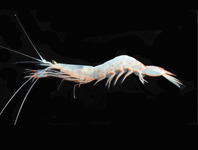Abstract
Phoebis Hübner (1819) is a genus of the Neotropical subfamily Coliadinae (Lepidoptera: Pieridae). The highest diversity is found in the Greater Antilles islands in the Caribbean region. Although from the taxonomic point of view, Phoebis seems to be a stable genus, there is no phylogenetic hypothesis corroborating the monophyly of the genus. In this study, we used both morphological characters and a genetic dataset consisting of one mitochondrial (COI) and three nuclear markers (RpS5, MDH, Wingless). The matrix was concatenated and analysed with parsimony under implied weights (IW). Also, the concatenated data set was analysed using maximum likelihood and Bayesian inference evolutionary methods, and ancestral states reconstruction with characters traditionally used for classification of Phoebis was carried out. The same topology was recovered by Parsimony, ML and BI analysis, and suggest that Phoebis is not a monophyletic genus, with Aphrissa and Rhabdodryas nested within it. Our findings allow us to consider the genera Rhabdodryas syn.rev. and Aphrissa syn.rev. to be synonyms of Phoebis. These results have implications for the systematics of Phoebis and the genera that should be accepted in Coliadinae.
References
Braby, M.F. (2005) Provisional checklist of genera of the Pieridae (Lepidoptera: Papilionoidea). Zootaxa, 832 (1), 1–16.
https://doi.org/10.11646/zootaxa.832.1.1Braby, M.F., Villa, R. & Pierce, N.E. (2006) Molecular phylogeny and systematic of the Pieridae (Lepidoptera: Papilionoidea): higher classification and biogeography. Zoological Journal of the Linnaean Society, 147, 239–275.
https://doi.org/10.1111/j.1096-3642.2006.00218.xBrown, F.M. (1929) A revision of the genus Phoebis (Lepidoptera). American Museum Novitates, 368, 1–22.
Brown, F.M. (1933) Notes on the genus Phoebis and the description of a new species. American Museum Novitates, 653, 1–5.
Butler, A.G. (1870–1873) Lepidoptera Exotica or descriptions and illustrations of exotic Lepidoptera. E.W. Janson, London, 8 pp. [pp. 25–32]
Comstock, J.H. (1918) The wing of insects. The Comstock Publishing Company, Ithaca, New York, 430 pp.
Costa Lima, A. (1950) Insetos do Brasil. 6º Tomo. Capítulo XVIII. Lepidópteros. 2a parte. Escola Nacional de Agronomia Série Didática, Rio de Janeiro, N° 8, 1–420.
D’Almeida, R.F. (1940) Revisão do gêneroPhoebis Hübn. (Lepidopt. Pierididae). Arquivos de Zoologia do Estado de São Paulo, 1, 67–152.
Felsenstein, J. (1985) Confidence limits on phylogenies: an approach using the bootstrap. Evolution, 39, 783–791.
https://doi.org/10.1111/j.1558-5646.1985.tb00420.xForbes, W.T.M. (1927) The American Catopsilia (Lepidoptera, Pieridae). Annals of the Entomological Society of America, 20 (4), 474–480.
https://doi.org/10.1093/aesa/20.4.474Godman, F.D. & Salvin, O. (1879–1901) Insecta. Lepidoptera-Rhopalocera. Biologia Centrali Americana. Vol. II. Taylor and Francis, London, 782 pp.
Goloboff, P. (1993) Estimating character weights during tree search. Cladistics, 9, 83–91.
https://doi.org/10.1111/j.1096-0031.1993.tb00209.xGoloboff, P., Farris, J. & Nixon, K. (2008) TNT, a free program for phylogenetic analysis. Cladistics, 24, 774–786.
https://doi.org/10.1111/j.1096-0031.2008.00217.xKlots, A.B. (1929) The generic status of Catopsilia Hübner and Phoebis Hübner, with a discussion of the relationships of the species and the homologies of the male genitalia (Lepidoptera, Pieridae). Bulletin of the Brooklyn Entomological Society, 24, 203–214.
Klots, A.B. (1931) A generic classification of the Pieridae (Lepidoptera) together with a study of the male genitalia. Entomologica Americana, 12, 139–242.
Lamas, G. (2005) Pieridae. In: Lamas, G. (Ed.), Atlas of Neotropical Lepidoptera. Vol. 5A. Checklist: Part 4A. Hesperioidea-Papilionoidea. Association for Tropical Lepidoptera, Inc., Gainesville, Florida, pp. 1–439.
Lanfear, R., Frandsen, P. B., Wright, A. M., Senfeld, T. & Calcott, B. (2016) PartitionFinder 2: new methods for selecting partitioned models of evolution for molecular and morphological phylogenetic analyses. Molecular biology and evolution, 34 (3), 772–773.
https://doi.org/10.1093/molbev/msw260Llorente-Bousquets, J.E. (1984) Sinopsis sistemática y biogeográfica de los Dismorphiinae de México con especial referencia al género Enantia Hübner (Lepidoptera: Pieridae). Folia Entomológica Mexicana, 58, 1–207.
Maddison, W.P. & Maddison, D.R. (2014) Mesquite: a modular system for evolutionary analysis. Version 3.01. Availabel from: https://www.mesquiteproject.org/ (accessed 24 July 2018)
Miller, L.D. (1970) Nomenclature of wing veins and cells. Journal of Research on the Lepidoptera, 8 (2), 37–48.
Murillo-Ramos, L., Hernandez-Mejía, C. & Llorente-Bousquets, J. (2016) The phylogenetic position of Aphrissa (Lepidoptera: Pieridae: Coliadinae). Zootaxa, 4147 (5), 538–550.
Oliveira, E.G., Syrgley, R.B. & Dudley, R. (1998) Do Neotropical migrant butterflies navigate using a solar compass? Journal of Experimental Biology, 201, 3317–3331.
Rambaut, A. & Drummond A.J. (2013) Tracer Version 1.5. Available from: http://beast.bio.ed.ac.uk/Tracer (accessed 24 July 2018)
Ronquist, F., Teslenko, M., van der Mark, P., Ayres, D.L., Darling, A., Höhna, S. & Huelsenbeck, J.P. (2012) MrBayes 3.2: efficient Bayesian phylogenetic inference and model choice across a large model space. Systematic Biology, 61 (3), 539–542.
Sereno, P.C. (2007) Logical basis for morphological characters in Phylogenetics. Cladistics, 23, 565–587.
https://doi.org/10.1111/j.1096-0031.2007.00161.xStamatakis, A. (2006) RAxML-VI-HPC: maximum likelihood-based phylogenetic analyses with thousands of taxa and mixed models. Bioinformatics, 22 (21), 2688–2690.
https://doi.org/10.1093/bioinformatics/btl446Wahlberg, N. & Wheat, C.W. (2008) Genomic outposts serve the phylogenomic pioneers: designing novel nuclear markers for genomic DNA extractions of Lepidoptera. Systematic Biology, 57, 231–242.
https://doi.org/10.1080/10635150802033006Wahlberg, N., Rota, J., Braby, M.F., Pierce, N.E. & Wheat, C.W. (2014) Revised Systematics and higher classification of Pierid butterflies (Lepidoptera: Pieridae) based on molecular data. Zoologica Scripta, 43 (6), 641–650.
https://doi.org/10.1111/zsc.12075Warren, A.D., Davis, K.J., Stangeland, E.M., Pelham, J.P., Willmott, K.R. & Grishin, N.V. (2016) Illustrated Lists of American Butterflies. Available from: http://www.butterfliesofamerica.com/ (accessed 15 September 2016)
Williams, C.B. (1930) The migration of Butterflies. Oliver & Boyd, Edinburgh and London, 473 pp.

